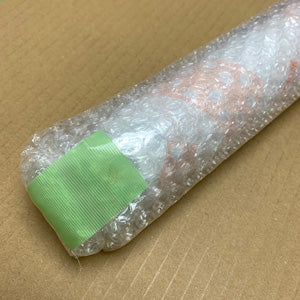Shopping Guide
You will be asked to enter your shipping address, phone number, name, etc. You do not need to register as a member. However, by registering, you can save yourself from entering your address for your next order.
Note:
• Please be careful not to make a mistake in your address.
• We are unable to deliver to hotels or other temporary locations.
You will be notified of the price, including shipping costs, usually in 1–3 business days.
Note:
• Prices will be shown in Japanese yen (JPY).
• We will let you know at this time if the item you ordered is out of stock.
• In rare cases, due to system errors or other reasons, your email may not have reached us. Before resending your email, please check your spam folder in case our response email ended up there.
We share our inventory with other online shops and stores. Please note that we may not be able to deliver the item if it is sold out in the store. Please let us know if you are in a hurry to have your item delivered to you, as the delivery time may vary depending on the item.
Credit Cards
The following credit cards are accepted: VISA, MASTER and American Express. Items will be dispatched after approval of the card payment. If the transaction is rejected by the bank, the order will be canceled.
PayPal
You must have a PayPal account. From the payment page, you will be redirected to the PayPal site. Follow the instructions on PayPal to complete your payment.
Bank Transfer & Check
We do not accept payments by bank transfer or check.
If payment is not confirmed within 14 days from the quote, we will cancel the transaction.
We typically ship within 1–3 business days (Japan time) after payment is received. Usually, we will deliver by post office EMS. If you would prefer us to use DHL, please contact us when ordering. There will be an additional charge.
Please note that it may take longer in the case of temporary closure due to unforeseen circumstances and New Year holidays.
Products are shipped from Tokyo, Japan. The delivery time may vary depending on the destination country. You will receive a tracking number when your package is shipped so that you can check on the progress of the delivery.
Please note that the delivery may be delayed due to unforeseen circumstances such as accidents, disasters, social turmoil, conflicts, traffic conditions, flight schedules, and customs delays. If the delivery is delayed due to these reasons, please note that you cannot cancel your order because of the delay.
Depending on the destination country, you may be charged a customs duty. We will not be able to answer any questions regarding tariffs. Also, please note that customs duties are not included in the quote. Thank you for your understanding.
Our paper is usually wrapped around a paper tube and delivered in a box. If the number of sheets is large or the paper is hard, it may be folded in three and put in the box without using a paper core. Please contact us in advance if you have particular preferences regarding the packaging method. However, please note that custom packaging will incur additional charges.

 |
 |
 |
 |
 |
 |
There are several printing methods, such as letterpress, silk, and offset. Letterpress and silk are generally better suited to printing on washi than offset. Handmade paper is softer, and its surface fibers tend to flip easier, making printing difficult. It is much easier to print on a machine-made paper. However, if you must print on handmade paper, we recommend using one with a smoother surface that isn't too thin. You will get better results with paper made using mitsumata or kozo. It is best to avoid materials like ganpi for printing.
It is possible to use them in a printer if the paper's thickness is the same as shoji paper. However, some issues like paper jams, coloring, or ink spreading might occur as the paper is not made for printing. Image warping may occur if the paper contains moisture. Avoid papers made from ganpi and thin mitsumata, as they might shrink when exposed to moisture. It is best to use kozo or mitsumata paper with a thickness of 6–9 momme ("Normal" in the thickness notation).
The standard measuring unit for Western paper is in grams per square meter. Japanese paper does not use this method. Instead, it is categorized according to thickness using terms such as usukuchi (thin mouth) and chuuniku (medium meat). The thickness also varies depending on the types of products. Therefore, we often label thin shoji paper as "Thickness: Average," whereby those that can not be seen through are thick. For Japanese paper used in printing, the weight per square meter is displayed.
The largest is Echizen 7 x 9 shaku, or approximately 210 x 270 cm, commonly used in Japanese paintings. The dimensions correspond to the f150 of the picture. Only a few places produce handmade paper sheets larger than a tatami mat. If you need a large sheet like this, you may choose to glue several together. If you need a longer length, we recommend using the machine-made roll washi.
The size of the tools for producing handmade papers determines the size of the sheets. Some of these tools are quite rare and so are not available in most workshops. The paper's size also depends on the size of the 'boat' used in storing raw materials and water. Most handmade paper sheets are made in a single dimension, and custom sizes are not available.
